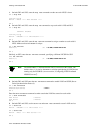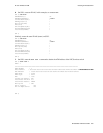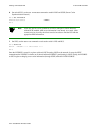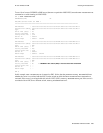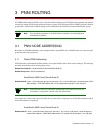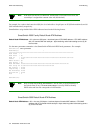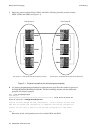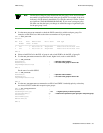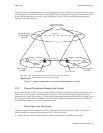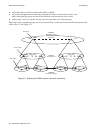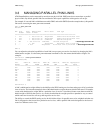
3-2 SmartSwitch ATM User Guide
PNNI Node Addressing PNNI Routing
Note If the node does not have a child node, and the node is also at the lowest level, the
second byte is assigned the constant value A0 (160 decimal).
For example, for a node at the lowest level (80), the level and address length bytes are 50 (80 in hexadecimal) and a0
(160 in hexadecimal), respectively.
SmartSwitches assign default Node ATM Addresses based on the following format:
SmartSwitch 2500 Family Default Node ATM Address
Default Node ATM Address
= 39 + nine zero (00) bytes + last three bytes of CPU MAC address + CPU MAC address
with 127 summed with the last byte + byte containing node index starting at zero (0) for
the first node
Use the show pnninode command to view SmartSwitch ATM switch PNNI node parameters. For example:
SmartSwitch # show pnninode
NodeIndex(1) :
================================================================================
Node Index : 1
Node Level : 80
Node Id : 50:a0:39:00:00:00:00:00:00:00:00:00:14:59:00:00:20:d4:14:59:7f:00
Lowest : True
Admin Status : Up
Oper Status : Up
Node ATM Addr: 39:00:00:00:00:00:00:00:00:00:14:59:00:00:20:d4:14:59:7f:00
Peer Group Id: 50:39:00:00:00:00:00:00:00:00:00:00:00:00
Rst Transit : False
Complex Rep : False
Rst Branching: False
DB Overload : False
Ptse : 2
SmartSwitch #
Note Keep in mind that the Node ATM Address is not the same as the ATM address of
the switch client (if any). The
Node ATM Address is used by PNNI to identify
PNNI nodes and does not correspond to LANE entities.
SmartSwitch 6500 Default Node ATM Address
Default Node ATM Address
= 39 + nine zero (00) bytes + last three bytes of chassis MAC address + CPU MAC
address with 127 summed with the last byte + byte containing node index starting at zero
(0) for the first node



